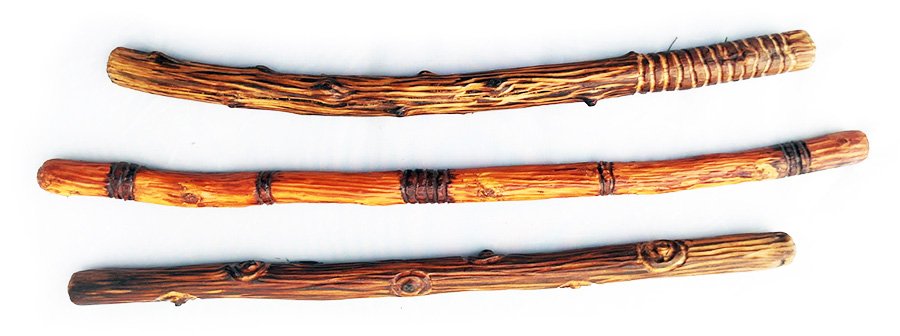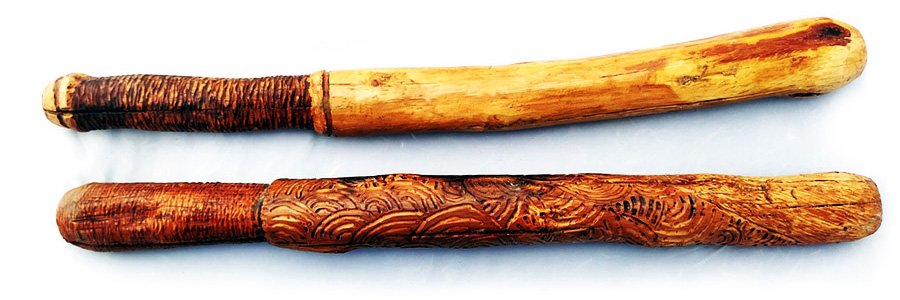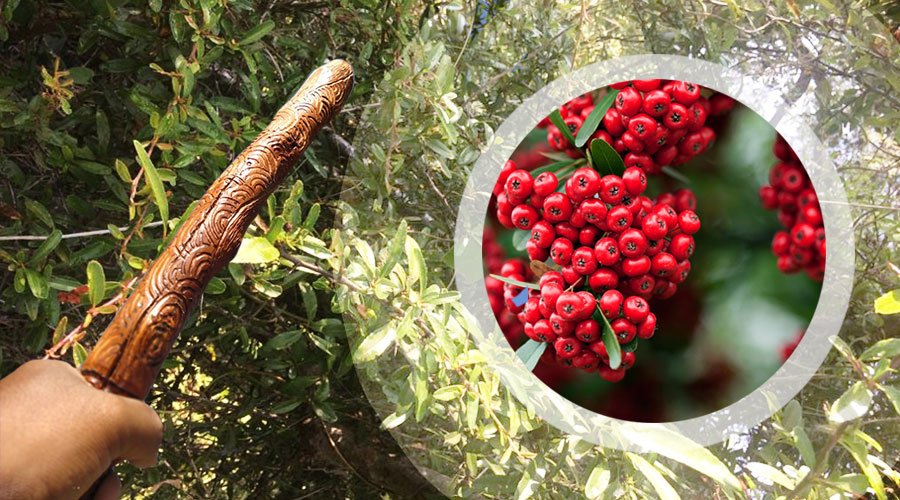Experiments with Ghingaru
An evergreen shrub, Ghingaru is commonly found in the hills of Uttarakhand. Its wood has been used as walking sticks since ages. The experiments with this strong but highly fibrous wood threw up interesting results.
Himalayan Redberry or Firethorn Apple is commonly known as Ghingaru in Uttarakhand, named after the tiny red fruits it bears which almost look like miniature apples. When eaten, their texture feels like apples but they have almost no taste whatsoever. Perhaps that is why they are largely left uneaten. The shrub however makes an excellent hedge and beautifies the landscape as it is evergreen and bears beautiful flowers and fruits.

Ghingaru wood is very fibrous and strong hence excellent for making walking sticks. This popular traditional use of the shrub makes it a household name in Uttarakhand and it occupies the same mindshare as other shrubs like Kilmora, Hisalu, etc. In order to make straight walking sticks, the stem is placed on fire immediately after cutting and then pressed under large stones to straighten it. The flexible stick so produced retains its new shape and does not brake easily.

The fibrous properties of wood, which provides it strength, also make it extremely tough to work on. One would desist carving any shape on its surface. But if one wants to restore the traditional usage of the material then merely handing it out as plain old stick may not work. That would fetch nostalgic attention but not translate into sale due to the absence of visible value addition. As the material is abundantly available, I decided to value add though carving and also explore alternate usage. The various experiments are presented below.
Walking sticks: The sticks were carved to create contemporary version of traditional walking sticks. The natural form of the wood was used to create new visual elements. The height of the stick is approximately 3 feet and can be further adjusted by cutting the wood.

Hand sticks: Carved hand sticks of different shapes and sizes were made. While some of them are very pretty slim and light, others are standard size and weight. Most of them are 18 to 20 inches long.

Magic wands: These carved magic wands (10 to 12 inches long) can withstand abuse of even the wildest kid magicians.

Batons: The dense fibre not only makes the wood strong but also gives it weight. Thick heavy batons made from Ghingaru can come in very handy specially when one resides in remote locations or is travelling alone. Keeping one on these batons beneath the car seat can provide a sense of safety. But getting a stem this thick is a challenge. With a length of approximately 16/17 inches, they weigh between 350 to 400 gms.

Hanging racks: The pegs of the hanging rack need to be strong. Ghingaru is a good material to meet that need. The body of these wooden racks are made of pine or mahogany wood while the pegs are made of Ghingaru. We have been using these racks for a while and can ensure that these pegs have far greater load bearing potential than what one can imagine.

Want to end this note with an interesting incident that happened this year. We decided to pluck the ripe fruits and disperse it along our farm boundary hoping that we will soon have a living fence which will also ensure a constant supply of wood for me to work on. The shrub is very hardy, evergreen and thorny. Even though the goats love its leaves, it would not be easy for them to cross a barrier so created.
As soon as we were done with the exercise of seed dispersal, I got a call from a friend asking if we have dry Ghingaru fruits. Apparently they fetch ₹100-200 per kilogram. It was a pretty good deal but the fruits had gone by then. I was told that the Ghingaru fruits have multiple medicinal uses.

Online research revealed that the fruits have immense medicinal properties. The fruits contain calcium, magnesium, zinc, sodium, potassium, vitamin A, vitamin B1, B2 & B12, vitamin C and various proteins. Its extract is used in treatment of multiple cardiac disorders, hypertension and different blood vessel related problems like arteriosclerosis and Burgor’s disease. Anti-oxidants present in the fruit help maintain blood-pressure and reduce cholesterol. Apparently Defence Research Development Organization (DRDO) has used Ghingaru to prepare a cardio-tonic called ‘Hridyamrit’. Ghingaru also acts as appetizer, help rejuvenation in aging people and in reduction of joint pains. Multiple sources state that it contain cyanide-like compound in miniscule quantity but they are not poisonous, even if consumed in large quantities. Ghingaru bark and the leaves also find medicinal usage. Another suggested usage of its leaves is in preparation of herbal tea which apparently works as a brain tonic.
What more can one desire from an ordinary looking shrub that grows without any fuss?















Interesting stuff Pangti, any made by you that one can come and pick up. Ab toh inki zaroorat pad sakti hain. BTW, we used to call these American Apples in Shimla and eat them, taste or no taste…
each one of them is made by me. i keep experimenting with wood to explore the potential of handicrafts.